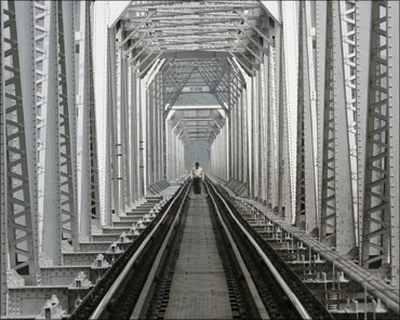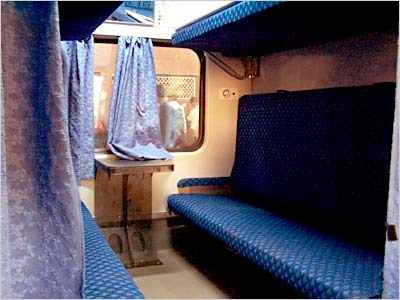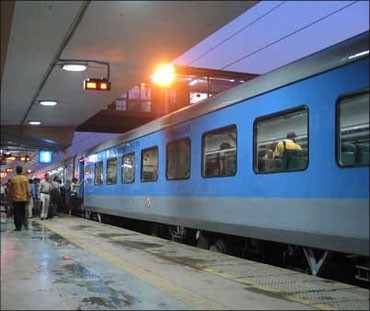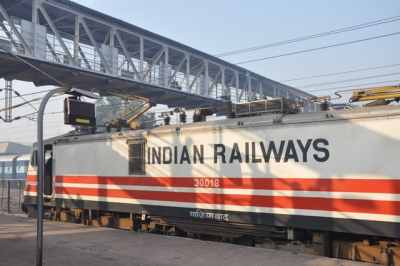Indian Railways (IR) seems to be caught in a time warp, kept there by successive ministers who have played to the gallery by announcing more and more new passenger trains without caring what this will do to the congestion in the network and the efficient carriage of revenue-earning freight traffic.
There is no dedicated freight network in sight, which in turn slows down passenger traffic. At the very least, long-distance passenger travel should be separated, operationally and administratively, from freight and commuter travel.
Also, there has been no new effort to raise passenger fares. This lack of modernisation, combined with stagnating revenue, is a recipe for disaster.
For Rediff Realtime News, ...
Title:Indian Railways need to modernise. But, how?
Thus, the report of the committee headed by Sam Pitroda, which has cogently argued for rapid catch-up modernisation and set out a road map for it, will be widely welcomed.
It has made the key point that what is spent on modernisation will more than come back not just in terms of IR's higher output and efficiency, but also externalities. Railway modernisation has the potential to add 1.5-2 per cent to the GDP growth rate.
No physical modernisation is possible without the upgradation of IR's organisational structure. From being focused along functions and cadres, its orientation has to change to businesses and customers.
...
Indian Railways need to modernise. But, how?
For example, the organisation's apex body, the Railway Board, has members for IR's mechanical, electrical, engineering and traffic functions. The commercial function, which generates revenue, is given short shrift.
Instead, at the top there should be positions and responsibilities for business areas like freight, passenger and public-private partnership.
Further, the Pitroda report, like the earlier one on safety, has highlighted the need to delegate more powers to the zonal railways, the operational set-ups.
...
Indian Railways need to modernise. But, how?
A key element of the modernisation plan is its funding. Of the Rs 8.39 lakh crore investment (modernisation plus regular) estimated for the 12th Five-Year Plan, the report says an amount of Rs 8.23 lakh crore is available.
An important part of this is Rs 2.02 lakh crore, which is assumed to come from internal generation and an assumed dividend rebate of Rs 24,000 crore (Rs 240 billion).
This total of Rs 2.26 lakh crore is almost three times the Rs 87,000 crore (Rs 870 billion) cumulative surplus (before dividend payment) during the five-year boom period, 2004-09.
...
Indian Railways need to modernise. But, how?
Since then, the operating ratio has declined precipitously -- and the economy has weakened altogether.
What is more, a white paper, prepared during the tenure of Mamata Banerjee as railway minister, debunked the surplus estimated by her predecessor Lalu Prasad, claiming that the actual surplus – after "adjustments" and appropriation to depreciation reserve fund, which should be treated as operating expenditure – came down to only Rs 39,000 crore (Rs 390 billion).
Additionally, the Pitroda report assumes that Rs 2.5 lakh crore will come from gross budgetary support -- that is substantially more than internal generation. But in the earlier five-year period, the ratio was in reverse -- internal funding of Plan expenditure was 1.3 times gross budgetary support. So while IR desperately needs to modernise, where is the funding for it to come from?







article